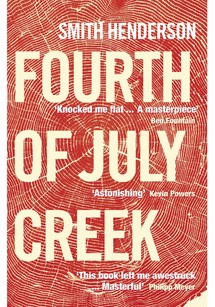


But Snow is a native son, too, and he hasn't escaped scot-free. Nights, he ends up drunk and brawling alongside childhood friends. His brother has assaulted his parole officer and is on the run. His wife and 13-year-old daughter have left for Texas and are quickly spiraling downward. Then one morning, 11-year-old Benjamin Pearl appears from the woods, malnourished, filthy, dressed in rags, wild. He bites the school principal who tries to apprehend him. Snow is called to the rescue, and in the course of trying to help Benjamin, he becomes entangled in the life of the boy's father, Jeremiah Pearl, an extreme separatist who, along with his family, lives the crudest imaginable existence, preparing for war against the U.S. government and for the Apocalypse.
Henderson's talents lie in the tenderness and empathy he extends to (almost) every character in the book, no matter how damaged. Snow comes off as a kind of fallen angel, as steeped in his own follies as he is determined to check those of the lost souls in his care: He means to help save these broken families, yet remains an agent in the disintegration of his own. That hard double truth earns the novel both its essential tragedy and its quiet hope.
WATCH OWN APP
Download the Watch OWN app and access OWN anytime, anywhere. Watch full episodes and live stream OWN whenever and wherever you want. The Watch OWN app is free and available to you as part of your OWN subscription through a participating TV provider.
LEARN MORE ABOUT THE WATCH OWN APP >NEWSLETTERS
SIGN UP FOR NEWSLETTERS TODAY AND ENJOY THE BENEFITS.
OPRAH IS A REGISTERED TRADEMARK OF HARPO, INC. ALL RIGHTS RESERVED © 2024 HARPO PRODUCTIONS, INC. ALL RIGHTS RESERVED.
OWN: OPRAH WINFREY NETWORK